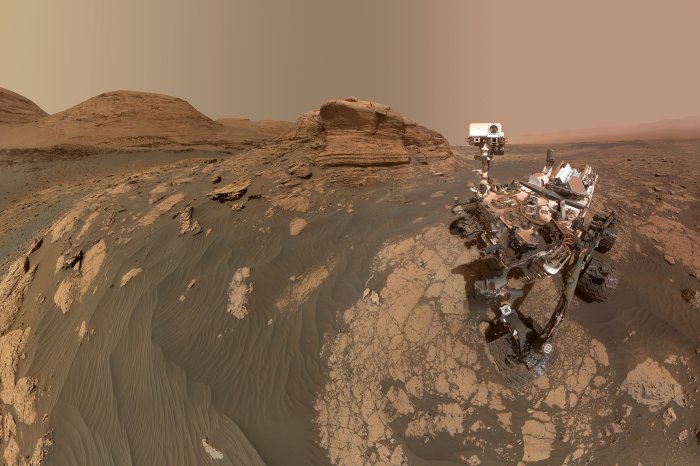This illustration shows NASA's Perseverance rover casting off its spacecraft's cruise stage, minutes before entering the Martian atmosphere. Image courtesy of NASA |
License Photo
Feb. 16 (UPI) -- After NASA attempts Thursday to land the biggest, heaviest vehicle sent to Mars yet -- no small feat -- scientists have planned an ambitious mission for exploration of the Red Planet's surface and collection of samples to be sent home.
The Perseverance rover will start by landing in an area filled with danger, chosen specifically for the potential of what can be discovered there.
"The Mars 2020 mission is probably the most challenging mission that we've ever attempted at NASA," Lori Glaze, director of NASA's Science Mission Directorate's Planetary Science Division, said during a press briefing on Tuesday.
NASA decided to assume the added risk in the name of science -- exploration on the Martian surface and research for decades to come back on samples sent to labs on planet Earth.
Carefully chosen destination
When Perseverance touches down on Thursday, it will do so inside Jezero Crater, near the western edge of Isidis Planitia, a massive basin north of the Martian equator.
Jezero Crater was once home to an ancient lake bed and river delta. Today, it hosts a unique mix of minerals like clays, carbonates and hydrated silica -- sediments and rocks that might host signs of ancient life.
While there is a lot of work planned for the rover, it will be some time after touchdown before Perseverance is ready to start conducting hard science.
"The first weeks of the mission are about checking out all of the systems -- engineering systems and the different instrument systems," said Ken Williford, deputy project scientist for the Mars 2020 mission.
"As we ensure everything is functioning properly, we'll start to test the cameras and begin conducting scientific observations," Williford said.
Time management
Once Perseverance is ready to roll, NASA will face a more mundane challenge: time management.
For the first time, NASA is preparing to collect Martian samples to be returned to Earth.
This means the Mars 2020 mission and Perseverance will have to divide time between conducting valuable science on site and collecting scientifically valuable samples to be sent home.
Even when Perseverance isn't using its robotic arms, nine drill bits, rotating storage carousel and 43 metallic tubes to pick up, seal and cache rock and sediment samples, the Mars 2020 mission's primary goal -- collecting these samples -- will influence the rover's on-site investigations.
"A large part of the science we do while we're not actively trying to collect samples is science that we're doing to provide context for those samples," Williford said.
Williford acknowledged that it will be a challenge to balance the need to collect a large diversity of rock and sediment samples in addition to entertaining the kinds of spontaneous observational opportunities he said inevitably arise when exploring faraway planets.
Lasers and cameras
Whether providing context or entertaining the curiosities of the mission's science team, Perseverance will rely on a series of lasers and several spectroscopic analysis methods to identify minerals and molecules on the Martian surface.
Perseverance will also use radar to study its surroundings.
"RIMFAX is a ground-penetrating radar that will be able to see several feet under the surface, and it will allow us to better understand the geologic structures beneath the surface," Glaze said.
NASA engineers have previously said they expect to peek about 30 feet below the surface to get a look at the rock and soil structure, which will help determine whether the ground can support the types of landers humans will use to get to Mars.
If time management becomes a problem, mission scientists will also be able to examine the rover's work flow from an unprecedented variety of camera angles.
"This rover is loaded with engineering and science cameras and microphones galore," said Jim Bell, principal investigator for the Mastcam-Z instrument and researcher at Arizona State University.
Mastcam-Z is capable of going from a wide-angle stereo view of the landscape to a fully zoomed-in telephoto view of sediment grain in a matter of seconds.
Perseverance's many cameras will not only help the rover home in on areas of geologic intrigue, but also provide documentation of the landing process and other mission milestones.
The milestones include the maiden voyage of a miniature helicopter, Mars Helicopter, which is stored inside the rover.
"This mission is going to be a feast for the eyes and ears. With 25 cameras total, it's the most camera-heavy deep space robotic mission in history," Bell said.
Overall goal
Most of the rover's many instruments will be used to answer two main scientific questions: Was Mars once habitable, and if so, did life once exist there?
The questions are part of the broader existential query that seems to haunt most astronomers, cosmologists and planetary scientists.
"Are we alone in this vast cosmic desert, or is life more common?" said Williford. "Big, basic questions that we don't know the answer to yet.
"But we think we're on the verge of being able to answer these big questions."
NASA’s Curiosity Mars rover used two different cameras to create this panoramic selfie, comprised of 60 images, in front of Mont Mercou, a rock outcrop that stands 20 feet tall on March 26, 2021, the 3,070th Martian day, or sol, of the mission. These were combined with 11 images taken by the Mastcam on the mast, or "head," of the rover on March 16. The hole visible to the left of the rover is where its robotic drill sampled a rock nicknamed "Nontron." The Curiosity team is nicknaming features in this part of Mars using names from the region around the village of Nontron in southwestern France. Photo courtesy of NASA/JPL-Caltech/MSSS
















